#2020 Bulgarian Archaeology Exhibition
Text
Bronze Dionysus Chariot Bust, Venus Terracotta Found in Home Burned Down in 251 AD Goth Invasion of Roman Empire in Bulgaria’s Plovdiv
Bronze Dionysus Chariot Bust, Venus Terracotta Found in Home Burned Down in 251 AD Goth Invasion of Roman Empire in Bulgaria’s Plovdiv
The bronze bust of wine god Dionysus, which was part of a chariot’s decoration, has been found in a large Roman Era building in Philipopolis, Bulgaria’s Plovdiv, burned down by the invading Goths in 251 AD. The Dionysus bust is seen here on display in the 2020 Bulgarian Archaeology Exhibition in the National Institute and Museum of Archaeology in Sofia. Photo: ArchaeologyinBulgaria.com
A bronze…
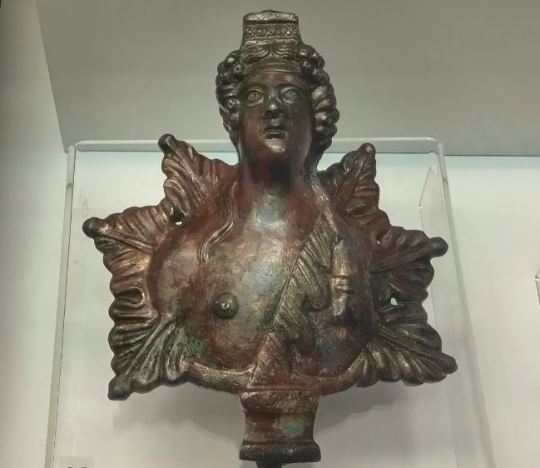
View On WordPress
#2020 Bulgarian Archaeology Exhibition#Ancient Rome#Antiquity#archaeologist#axis#barbarian invasion#barbarian invasions#bronze#bust#chariot#Dionysus#Elena Bozhinova#Eumolpia#excavations#Gothic#Goths#Greek mythology#Ivo Topalilov#Late Antiquity#mosaic#mosaics#murals#Odeon#Odeon Plovdiv#Philipopolis#Plovdiv#Pompeian red#Pulpudeva#rescue excavations#Roman Empire
22 notes
·
View notes
Text
3,000-Year-Old Bird-Shaped Vessel Placed Burial Urn Found in Bulgaria’s Baley in Crucial Thracian Bronze Age Necropolis
3,000-Year-Old Bird-Shaped Vessel Placed Burial Urn Found in Bulgaria’s Baley in Crucial Thracian Bronze Age Necropolis
This more than 3,000-year-old encrusted ceramic bird-shaped vessel depicting a duck or another water bird species, has been found by archaeologists inside an urn in the Bronze Age necropolis in Baley in Northwest Buglaria. Photo: National Institute and Museum of Archaeology
Archaeologists have discovered 15 new graves from the 2nd millennium BC, the Middle Bronze Age and the Late Bronze Age, near…

View On WordPress
#2020 Bulgarian Archaeology Exhibition#Ancient Thrace#Ancient Thracians#applique#appliques#archaeologist#Baley#bird#bird vessel#bone needle#Bregovo Municipality#Bronze Age#Bronze Age to Iron Age Transition#bronze applique#Bulgaria - Serbia border#burial#ceramic vessels#ceramics#cremation#Culture of the Encrusted Ceramics of the Lower Danube#Danube#Danube River#duck#Early Iron Age#excavations#Georgi Ivanov#hair pendant#kantharos#Late Bronze Age#lid bowl
11 notes
·
View notes
Text
Medieval Metallurgical Center at Dugout Settlement from Height of First Bulgarian Empire Discovered in Northwest Bulgaria
Medieval Metallurgical Center at Dugout Settlement from Height of First Bulgarian Empire Discovered in Northwest Bulgaria
In one spot of the Ancient Bulgar settlement and metallurgy center from the First Bulgarian Empire, the archaeologists have found three kilns which were used one after the other. Photo: Video grab from BTA
A metallurgical center for the processing of iron ore as part of a large Ancient Bulgar settlement with dugouts from the 9th – 10th century, i.e. the height of the First Bulgarian Empire, has…

View On WordPress
#2020 Bulgarian Archaeology Exhibition#Ancient Bulgar#Ancient Bulgars#anvil#arrow#arrow tip#arrow tips#awl#Balkan Mountains#bellows#blacksmith&039;s workshop#bronze ring#Bulgaria#Byzantine Empire#Byzantium#charcoal#clay#dugout#dwelling#Early Middle Ages#Eastern Roman Empire#engolpion (encolpion)#excavations#exhibition#fence#First Bulgarian Empire#furnace#furnaces#hearth#iron ore
8 notes
·
View notes
Text
7,000-Year-Old Ritual Table with ‘Horned Animal’, First Bulgarian Empire Settlement Found near Varna in Rescue Digs
7,000-Year-Old Ritual Table with ‘Horned Animal’, First Bulgarian Empire Settlement Found near Varna in Rescue Digs
The 7,000-year-old zoomorphic ritual table decorated with a “horned animal”, perhaps a ram, found near Bulgaria’s Tsonevo and Dalgopol, as displayed in the 2020 Bulgarian Archaeology Exhibition at the National Institute and Museum of Archaeology in Sofia. Photo: ArchaeologyinBulgaria.com
An archaeological site containing structures from both the Neolithic, with a “horned animal” ritual table as…

View On WordPress
#2020 Bulgarian Archaeology Exhibition#Alexander Manev#Ancient Bulgar#Ancient Bulgars#archaeologist#arrow#arrow tip#arrow tips#awl#Black Sea#Black Sea coast#bone tools#ceramic vessels#ceramics#Dalgopol#Dalgopol Municipality#Dalgopol Museum of History#Dimitar Zlatarski#dugout#Early Middle Ages#excavations#First Bulgarian Empire#flint#flint tools#hearth#Henrieta Todorova#horn#horned animal#iron#Kamchiya River
9 notes
·
View notes
Text
6,500-Year-Old Full Set of Vessels, Including Zoomorphic One, Gold Bead from World’s Oldest Found in Prehistoric Settlement Mound near Bulgaria’s Pomorie
6,500-Year-Old Full Set of Vessels, Including Zoomorphic One, Gold Bead from World’s Oldest Found in Prehistoric Settlement Mound near Bulgaria’s Pomorie
Prehistoric vessels, tools, and a gold bead from ca. 6,500 BC discovered in the Hidden Settlement Mound near Bulgaria’s Black Sea coast of Pomorie, which have been included in the 2020 Bulgarian Archaeology Exhibition. A total of 13 vessels are shown here, out of a collective find of 21. The intriguing headless four-legged zoomorphic vessel is visible in the middle. Photo: National Institute and…

View On WordPress
#2020 Bulgarian Archaeology Exhibition#Aeneolithic#awl#Black Sea#Black Sea coast#bone tools#ceramic vessels#Chalcolithic#Copper Age#excavations#exhibition#flint#flint tools#fox#fox hole#gold#gold bead#Margarita Popova#National Museum of History#Pomorie#Pomorie Municipality#Poroy#Poroy Water Reservoir#pottery vessels#prehistoric vessels#prehistory#settlement mound#tractor#treasure hunters#treasure hunting
6 notes
·
View notes
Text
1st Century BC Traces of Earliest Roman Presence in Bulgaria on Danube Discovered Halfway between Major Antiquity Cities Bononia (Vidin) and Ratiaria (Archar)
1st Century BC Traces of Earliest Roman Presence in Bulgaria on Danube Discovered Halfway between Major Antiquity Cities Bononia (Vidin) and Ratiaria (Archar)
An aerial shot of the vast newly discovered archaeological site near Sinagovtsi and Vidin in Northwest Bulgaria containing the some of the earliest traces of Roman presence in today’s Bulgaria, a settlement halfway between the major Roman Danube cities of Bononia and Ratiaria. Photo: Archaeological Team, official catalog and poster for the 2020 Bulgarian Archaeology Exhibition
A vast…
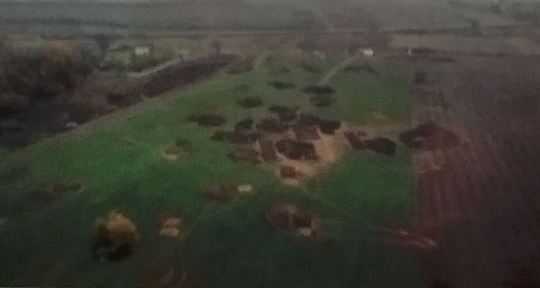
View On WordPress
#2020 Bulgarian Archaeology Exhibition#Ancient Bulgars#Ancient Rome#Ancient Thrace#Ancient Thracians#archaeologist#Archar#Augen fibulae#Baba Vida Castle#Baba Vida Fortress#Bononia Fortress#bulldozer#Byzantine Empire#Byzantium#Christian necropolis#cloverleaf interchange#coin#coins#Colonia Ulpia Ratiaria#construction works#Dacia Ripensis#Danube#Danube River#decagonal tower#denarii#Dimovo Municipality#Dunavia#Dunavtsi#Dunonia#Early Iron Age
2 notes
·
View notes
Text
Ancient Thracian Horse Burial, 'Half a Skeleton' Human Burial from Early Iron Age Found near Bulgaria’s Polski Trambesh
Ancient Thracian Horse Burial, ‘Half a Skeleton’ Human Burial from Early Iron Age Found near Bulgaria’s Polski Trambesh
An Ancient Thracian horse burial from the Early Iron Age in which the animal was buried together with an iron rein, has been discovered in a diverse newly found archaeological site near Polski Trambesh in Central North Bulgaria. Photo: Archaeologist Zhivko Uzunov, Official catalog and poster for the 2020 Bulgarian Archaeology Exhibition
An Ancient Thracian burial of a horse and a human burial…

View On WordPress
#2020 Bulgarian Archaeology Exhibition#Ancient Thrace#Ancient Thracians#animal bones#Antiquity#archaeologist#Archaic Period#arrow tips#bone tools#bones#Bronze Age#Bronze Age to Iron Age Transition#burial pit#carved pottery#ceramics#Classical Period#cremation#dugout#Early Classical Period#Early Iron Age#encrusted pottery#excavations#flint#flint arrow tips#flint tools#half a skeleton burial#horse#horse bone#horse burial#horse skeleton
3 notes
·
View notes
Text
Wooden Coffin Burials, Glass Jewels Discovered in Vast Medieval Necropolis near Bulgaria’s Radnevo
Wooden Coffin Burials, Glass Jewels Discovered in Vast Medieval Necropolis near Bulgaria’s Radnevo
A particularly rich medieval burial inventory has been found in grave No. 292 of the 12th century necropolis near Znamenosets and Radnevo in Southern Bulgaria. It includes glass bead necklaces, glass bracelets, bronze bracelets, and silver temple pendants. Photo: National Institute and Museum of Archaeology
A large number of glass jewels and remains of wooden coffins in some of the burials among…
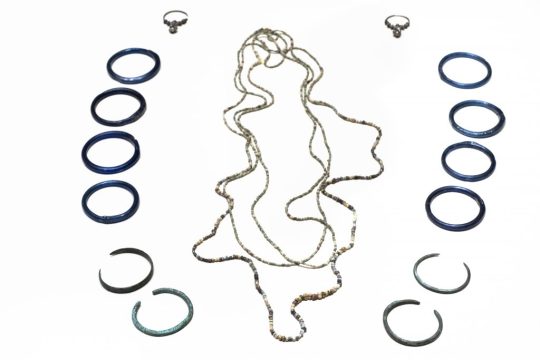
View On WordPress
#2020 Bulgarian Archaeology Exhibition#Aeneolithic#bronze#Bronze Age#bronze ring#burial#Byzantine Empire#Byzantium#cemetery#Chalcolithic#Christian necropolis#Christianity#church#copper#Copper Age#earring#earrings#Eastern Roman Empire#excavations#glass#glass beads#glass bracelet#glass jewels#glass necklace#grave#graves#High Middle Ages#Iron Age#Maritsa East Museum of Archaeology in Radnevo#medieval settlement
2 notes
·
View notes
Text
Iron Age Ancient Thracian Hamlet, ‘Cross-Shaped’ Ax Discovered in Highway Construction Excavations in Bulgaria’s Ugarchin
Iron Age Ancient Thracian Hamlet, ‘Cross-Shaped’ Ax Discovered in Highway Construction Excavations in Bulgaria’s Ugarchin
This Early Iron Age ax, from the 11th – 6th century BC described as a “cross-shaped” ax by the Bulgarian archaeologists, has been found in an Ancient Thracian hamlet near Ugarchin sporadically inhabited for about a millenium. The ancient iron ax is shown here as exhibited in the 2020 Bulgarian Archaeology Exhibition at the National Institute and Museum of Archaeology in Sofia. Photo:…
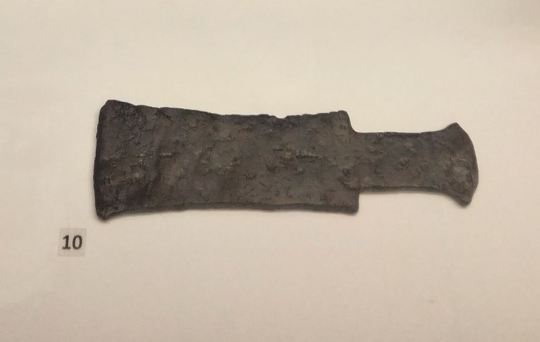
View On WordPress
#2020 Bulgarian Archaeology Exhibition#Ancient Thrace#Ancient Thracians#archaeologist#ax#battle ax#bowl#ceramic vessels#cross-shaped ax#cup#Early Iron Age#excavations#exhibition#fibula#gray pottery#hamlet#Hemus Highway#iron#Iron Age#kolibarstvo#Late Iron Age#Lovech District#National Institute and Museum of Archaeology#polished gray pottery#pottery#pottery jar#pottery vessels#rescue excavations#settlement#Thracian settlement
2 notes
·
View notes
Text
Large Silver Coin Hoard Hidden during 251 AD Goth Invasion of Roman Empire Discovered in Bulgaria’s Plovdiv
Large Silver Coin Hoard Hidden during 251 AD Goth Invasion of Roman Empire Discovered in Bulgaria’s Plovdiv
Part of the hoard of nearly 600 Ancient Roman silver coins (denarii) from Bulgaria’s Plovdiv, ancient Philipooplis, hidden during the 251 Goth Invasion of the Roman Empire, as exhibited in the 2020 Bulgarian Archaeology Exhibition. Photo: National Institute and Museum of Archaeology
A coin hoard containing nearly 600 silver coins (denarii) from the 1st – 3rd century AD, most likely hidden during…
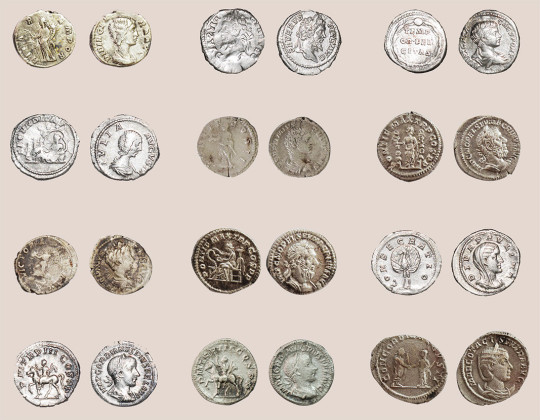
View On WordPress
#2020 Bulgarian Archaeology Exhibition#Ancient Rome#Antiquity#archaeologist#barbarian invasion#barbarian invasions#cellar#Didia Clara#Elena Bozhinova#Emperor Antonius Pius#Emperor Caracalla#Emperor Commodus#Emperor Elagabalus#Emperor Geta#Emperor Gordian III#Emperor Herennius Etruscus#Emperor Macrinus#Emperor Maximinus Thrax#Emperor Maximus#Emperor Philip I the Arab#Emperor Philip II#Emperor Septimius Severus#Emperor Severus Alexander#Emperor Trajan Decius#Eumolpia#excavations#Gothic#Goths#Ivo Topalilov#Julia Domna
3 notes
·
View notes
Text
120 Rituals Pits in 7,000-Years-Old ‘Pit Field’ in Northeast Bulgaria, Prehistoric Bull Figurines Remarkable
120 Rituals Pits in 7,000-Years-Old ‘Pit Field’ in Northeast Bulgaria, Prehistoric Bull Figurines Remarkable
These 7,000-year-old prehistoric bull figurines are among countless archaeological artifacts discovered in prehistoric ritual pits in a pit field from the Late Neolithic near Kovachevets and Popovo in Northeast Bulgaria. They have been featured on some of the official posters for the 2020 Bulgarian Archaeology Exhibition. Each of the prehistoric bull figurines has a hole in the place of the eyes…
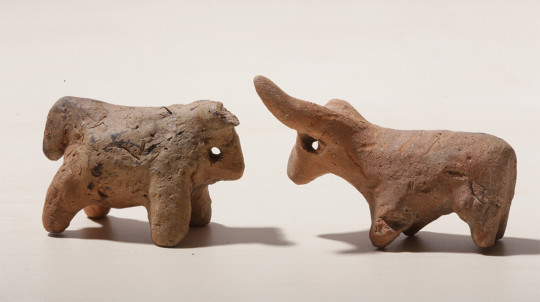
View On WordPress
#2020 Bulgarian Archaeology Exhibition#Aeneolithic#archaeologist#bone#bone tools#Bulgarian Archaeology exhbition#bull#bull figurine#burning ritual#ceramic vessels#ceramics#Chalcolithic#Copper Age#excavations#exhibition#figurine#flint#Georgi Katsarov#hand mill#handmill#horn#horn artifacts#Hotnisa#Hotnitsa Culture#Hotnitsa Gold Treasure#Hotnitsa prehistoric settlement#Kovachevets#Krum Bachvarov#Late Neolithic#millstone
4 notes
·
View notes
Text
Fine Marbles in 14 Colors from Constantine the Great’s Danube Bridge Opening in 328 AD Found in Roman City Ulpia Oescus in North Bulgaria
Fine Marbles in 14 Colors from Constantine the Great’s Danube Bridge Opening in 328 AD Found in Roman City Ulpia Oescus in North Bulgaria
Part of a wall fluted column of decorative striped calcite found in the latest excavations of the Grant Hall of the Ancient Roman city of Ulpia Oescus in Central North Bulgaria. Photo: National Institute and Museum of Archaeology
Archaeologists have discovered a total of 14 different kinds of highly sophisticated colorful marbles used in lavish wall decorations of a grand hall in the huge Roman…
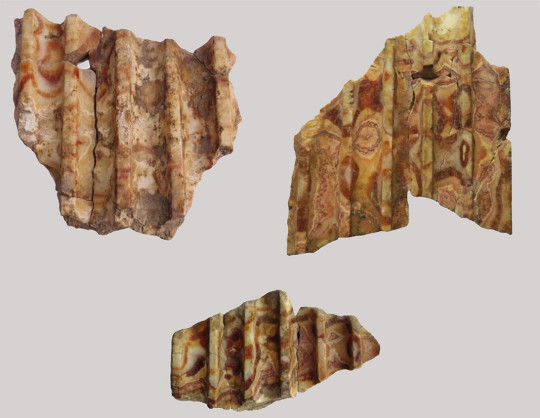
View On WordPress
#2020 Bulgarian Archaeology Exhibition#Achaeans#Ancient Rome#archaeologist#Aula (Grand Hall)#calcite#Constantine&039;s Bridge#Danube#Danube River#Emperor Constantine I The Great#excavations#Fortuna statue#Gergana Kabakchieva#Gigen#green marble#marble#mosaic#mosaics#National Institute and Museum of Archaeology#Pleven District#Pleven Regional Museum of History#Roman Empire#Silva Sabkova#Sonya Lazarova#Temple of Fortuna#The Achaeans#thermae#Tinka Krasteva#treasure hunters#treasure hunting
1 note
·
View note
Text
14th Century Silver Coin of Tsar Ivan Alexander of Second Bulgarian Empire Becomes August 2020 ‘Exhibit of the Month’ in National Archaeology Museum
14th Century Silver Coin of Tsar Ivan Alexander of Second Bulgarian Empire Becomes August 2020 ‘Exhibit of the Month’ in National Archaeology Museum
The back side of the mid-14th century silver coin features Tsar Ivan Alexander (on the lefthand side of the coin) and his son and Co-Emperor Mihail Asen of the Second Bulgarian Empire, wearing crowns and holding scepters. Photo: National Institute and Museum of Archaeology
A silver coin minted by Tsar Ivan (Yoan) Alexander (r. 1331 – 1371), the last relatively successful ruler of the Second…

View On WordPress
#2019 Bulgarian Archaeology Exhibition#Bulgarian coins#Christianity#coin#coin minting#coins#crown#Eastern Orthodox Christianity#exhibit of the month#Holy Mother of God#iconography#Jesus Christ#Late Middle Ages#Middle Ages#mint#National Institute and Museum of Archaeology#Oranta#Ottoman Empire#Ottoman Turkey#Ottoman Turks#scepter#Second Bulgarian Empire#silver#silver coin#silver coins#Tarnovo Tsardom#Tsar Ivan Alexander#Tsar Ivan Asen IV#Tsar Ivan Shishman#Tsar Ivan Sratsimir
3 notes
·
View notes
Text
Top 20 Stories by ArchaeologyinBulgaria.com in April 2021
Top 20 Stories by ArchaeologyinBulgaria.com in April 2021
Part of the hoard of nearly 600 Ancient Roman silver coins (denarii) from Bulgaria’s Plovdiv, ancient Philipooplis, hidden during the 251 Goth Invasion of the Roman Empire, as exhibited in the 2020 Bulgarian Archaeology Exhibition. Photo: ArchaeologyinBulgaria.com
Following are the 20 most popular stories with the readers of ArchaeologyinBulgaria.com from around the worold during the month of…
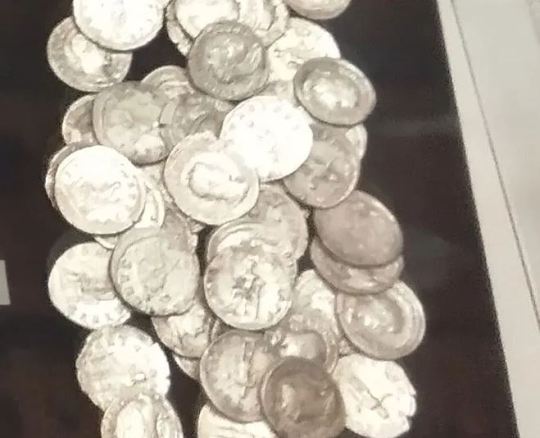
View On WordPress
1 note
·
View note
Text
Archaeologists Find nearly 7,000-Year-Old Copper Age Workshop for Production of Flint Tools near Belogradets in Northeast Bulgaria
Archaeologists Find nearly 7,000-Year-Old Copper Age Workshop for Production of Flint Tools near Belogradets in Northeast Bulgaria
Nearly 7,000-year-old flint cores and manufacturing waste from the newly discovered Early Copper Age flint production workshop near Belogradets, Varna District, in Northeast Bulgaria, as showcased in the 2020 Bulgarian Archaeology Exhibition at the National Institute and Museum of Archaeology in Sofia. Photo: ArchaeologyinBulgaria.com
A prehistoric workshop, or “manufacturing center”, for the…

View On WordPress
#Aeneolithic#animal bones#Balkan Stream natural gas pipeline#Black Sea coast#ceramics#Chalcolithic#concretion#Copper Age#Early Chalcolithic#Early Copper Age#encrusted pottery#Evgeniya Naydenova#excavations#flint#flint core#flint workshop#Kamenovo#Late Neolithic#Ludogorie Region#Lyubomir Todorov#National Institute and Museum of Archaeology#natural gas pipeline#Neolithic#New Stone Age#Northeast Bulgaria#Old Europe#Oryahovo Museum of History#pipeline#pipeline construction#pipelines
1 note
·
View note